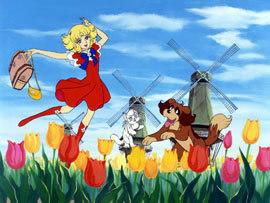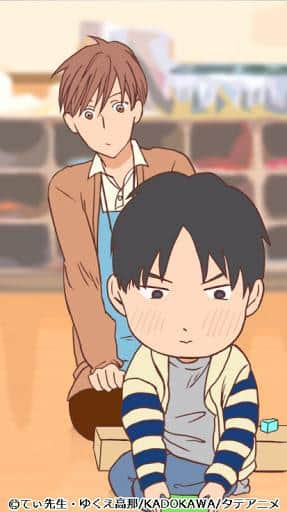The appeal and evaluation of "Hana no Ko Lunlun": Reevaluating a nostalgic anime classic

Flower Child Lunlun - Looking back on the nostalgic witch series"Lunlun, the Child of Flowers," broadcast from 1979 to 1980, was the eighth in Toei Animation's Witch Girl series and was loved by many viewers. This anime, which depicts the journey of the prince of Planet Flowernu in search of the "seven-colored flowers" necessary to ascend to the throne, was set in various European countries and gained popularity by conveying the appeal of overseas travel, which was not yet common in Japan at the time. In this article, we will take a closer look at the appeal, background, characters, story, and subsequent influence of "Lunlun, the Child of Flowers." ■Overview of the work"Lunlun, the Flower Child" is a 50-episode series that airs on TV Asahi every Friday from 7:00 to 7:30 p.m. It was written by Jinbo Shiro and produced by Toei Animation. The main character, Lunlun, travels around Europe in search of the "seven-colored flowers" that are necessary for the prince of Planet Flowernu to ascend to the throne. During her journey, Lunlun encounters incidents caused by humans and gets involved in them with her natural curiosity. After the incidents are resolved, "flowers of a rich heart" bloom in the hearts of the humans, and Lunlun herself grows as a person. ■ StoryLunlun travels to various European countries with Cato and Nouveau in search of the "Seven-Colored Flower" that is necessary for the prince of Planet Flowernu to ascend to the throne. In the cities they visit, they encounter incidents caused by humans, and Lunlun gets involved in the cases due to her natural curiosity. After the incidents are resolved, "flowers of rich hearts" bloom in the hearts of the humans, and Lunlun herself grows as a person. In each episode, Lunlun uses the "Flower Key" pendant to perform magic to change her outfit, giving the work a fashionable image. Another unique feature is that at the end of the story, the language of the flower associated with that episode is explained. ■ Characters"Lunlun, the Flower Child" features many unique characters. The main character, Lunlun Flower, is a 12-year-old girl with flower fairy bloodline who can transform into various fashions using the "Flower Key". Cato is a white cat who can speak human language and is an emissary from the planet Flowernu. Nubo is a dog who can speak human language and is an emissary for the king of the planet Flowernu. Serge Flora is the first prince of the planet Flowernu, who travels around the country as a photographer under cover of his true identity, specializing in taking pictures of flowers. Togenisia is a thorny flower fairy from the planet Flowernu who follows Lunlun and her friends and plots to steal the "Seven-Colored Flowers". Yabouki is a demonic raccoon who serves Togenisia and can transform and disguise himself using his trademark black umbrella. ■CastThe cast of "Flower Child Lunlun" is as follows:
■ Main staffThe main staff of "Hana no Ko Lunlun" are as follows:
The theme songs are the opening song "Hana no Ko Lun Lun" and the ending song "Onna tte" with lyrics by Kazuya Chika, music by Asei Kobayashi, and arrangement by Nozomi Aoki. The opening song is sung by Mitsuko Horie and The Chavs, and the ending song is sung by Yuko Inomata and Asei Kobayashi. ■SubtitleThere are 50 episodes of "Flower Child Lunlun" with subtitles. Some of them are listed below.
■ Related worksThe following works are related to "Flower Child Lunlun."
■The appeal of the workThe appeal of "Lunlun, the Flower Child" is undoubtedly its fashionable image and stories set in various European countries. By conveying the appeal of overseas travel, which was not yet common in Japan at the time, the show impressed viewers with a fresh perspective. Also, the scene in which Lunlun uses the "Flower Key" pendant to perform magic to change her outfit became an envy for children. Furthermore, at the end of each episode, the meaning of the flower associated with that episode is explained, which not only educated viewers but also added depth to the story. ■ Background of the work"Lunlun, the Flower Child" was produced as the eighth work in Toei Animation's Little Witch Series. Many works in the Little Witch Series were produced from the 1960s to the 1980s, and were loved by children. "Lunlun, the Flower Child" was particularly popular among them for its fashionable image. It also impressed viewers with a fresh message by conveying the appeal of overseas travel, which was not yet common in Japan at the time. ■ Influence of the work"Hana no Ko Lunlun" was loved by many viewers and influenced subsequent anime works. In particular, its influence can be seen in later anime works as a work with a fashionable image. In addition, the storyline set in various European countries not only conveyed to viewers the appeal of overseas travel, but also taught the importance of cross-cultural understanding. Furthermore, the feature of explaining the flower language of the flower related to that episode at the end of each episode not only provided viewers with knowledge, but also added depth to the story. ■ Evaluation of the work"Lunlun, the Child of Flowers" is a work that has received high praise from many viewers. In particular, its fashionable image has made it an object of admiration for children. In addition, the storyline, which is set in various European countries, provided viewers with a fresh and moving experience. Furthermore, the feature of explaining the flower language associated with the episode at the end of each episode not only educated viewers, but also added depth to the story. It can be said that these elements have made "Lunlun, the Child of Flowers" a work that is loved by many viewers. ■Recommending a workWith its fashionable image, "Lunlun, the Little Flower Girl" became an object of admiration for children. In addition, the storyline, which was set in various European countries, provided viewers with a fresh and moving experience. Furthermore, at the end of each episode, the meaning of the flower associated with that episode was explained, which not only educated viewers but also added depth to the story. It can be said that these elements have made "Lunlun, the Little Flower Girl" a work that is loved by many viewers. We recommend that you give it a watch at least once. |
<<: Go for it! Our Hit and Run - A thorough analysis of a moving baseball story
>>: The appeal and evaluation of the "Red Bird's Heart" Japanese classic fairy tale series
Recommend
The Japanese drama "The Way of the Househusband" adapted from the comic has officially started filming, and the latest stills of Hiroshi Tamaki are released
The popular manga "The Way of the Househusba...
A thorough analysis of the emotions and appeal of the first season of "Kimi ni Todoke"!
Kimi ni Todoke - Detailed review and recommendati...
Martin Scorsese considered filming Joker: The film is great
Recently, Martin Scorsese talked about "Joke...
A movie superstar is born. Disney officially acquires Fox on March 20
Last year, the news of Disney's acquisition o...
The appeal and evaluation of "The Story of a Fawn": A moving story and the depth of its characters
"The Story of a Fawn" - A story of natu...
"Black Lagoon: Roberta's Blood Trail" Review: Intense action and deep characters
BLACK LAGOON Roberta's Blood Trail - The Veng...
The appeal and reviews of "Rakusho! Hyper Doll": An anime experience not to be missed
Easy! Hyper Doll - An action comedy filled with c...
Midori no Makibao: The excitement and appreciation of a never-ending challenge
Midori no Makibao: An Endless Challenge!! - A mov...
Rediscover the charm of Sherlock Holmes and Dr. Watson! Impressions and reviews of the "Minna no Uta" version
Sherlock Holmes and Dr. Watson: The appeal of NHK...
D-1 DEVASTATOR's shocking performance and its evaluation
D-1 DEVASTATOR - Devastator - Comprehensive evalu...
More stills from Netflix's The Witcher revealed! Ciri in blue robe appears in the snow
Yesterday, Italian magazine Corriere released an ...
The animation of "The Three-Body Problem" was postponed and originally scheduled to be launched on December 3
Today (December 2), the official Three-Body Anima...
The first place comes from Slam Dunk! Japanese readers give enthusiastic reviews on the ranking of "The Most Healing Cute Fat Man in ACG"
On October 2, the Japanese professional ranking w...
"Kung Fu Panda 4" trailer will be released, Hans Zimmer will return to compose music
According to foreign media reports, the famous mu...
A novel that is even lighter than a light novel: A Japanese netizen opened a miniature version of the first volume of "No Game No Life" from a gashapon
Light novels are a popular genre of entertaining ...









